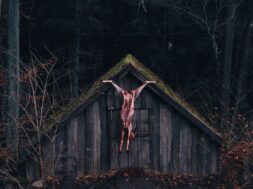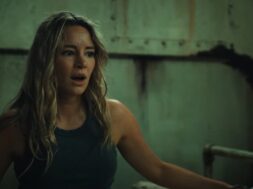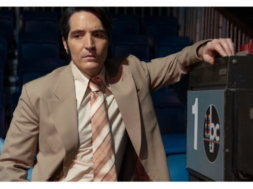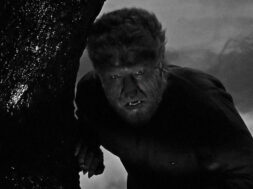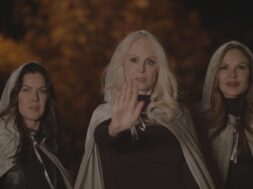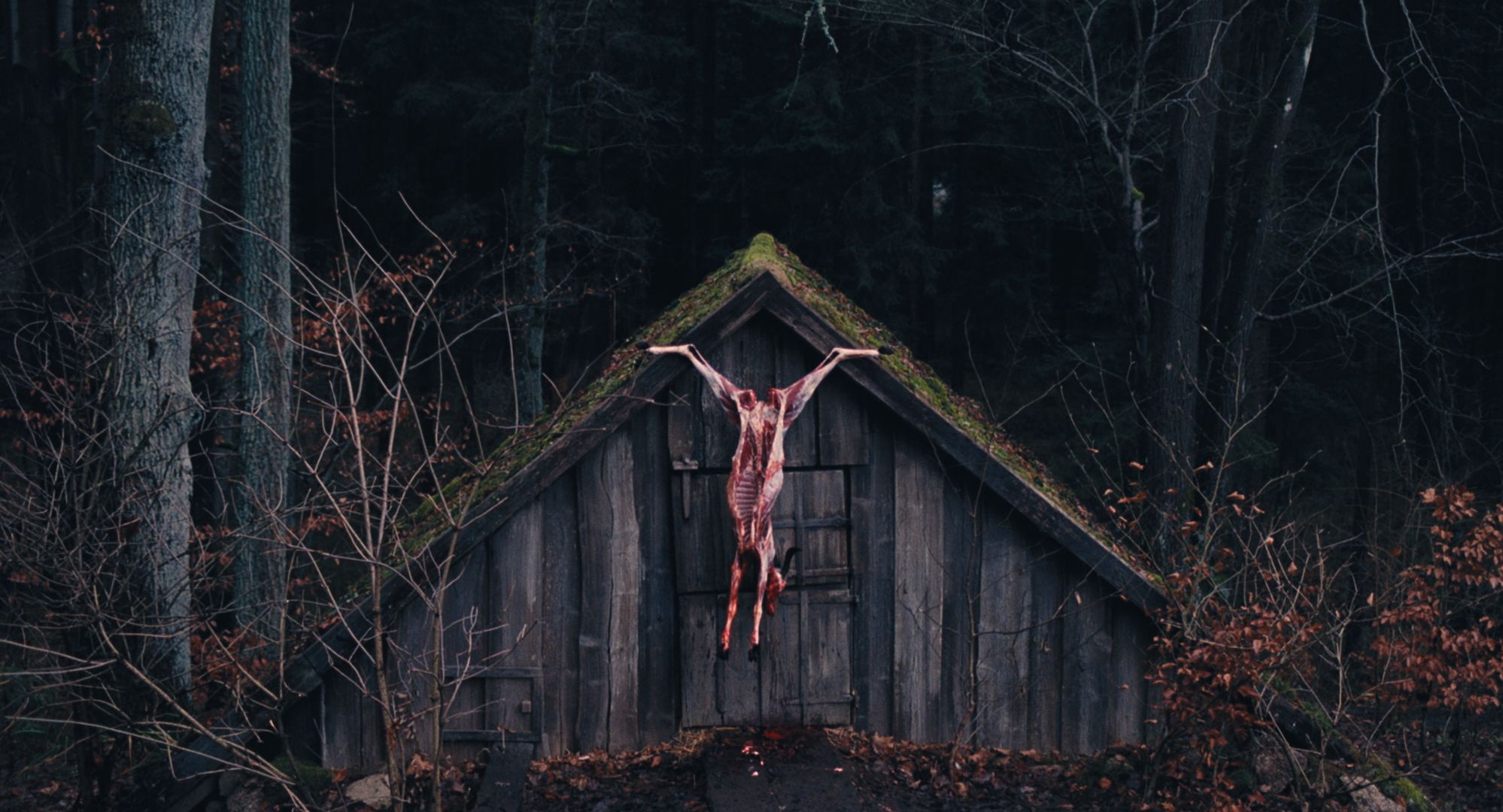
Austrian filmmakers Veronika Franz and Severin Fiala made a name for themselves with the deeply disturbing feature films Goodnight Mommy and The Lodge. Now, in The Devil’s Bath, the writers/directors have turned to historical records to come up with their most disturbing film yet. And what makes it all the more horrifying is that the movie is based on a true story.
In 18th century Austria, women suffering from depression (“the Devil’s bath”) would often commit “suicide by proxy” by murdering someone (mostly children) and then confessing their sins before execution to guarantee a seat in heaven.
Fascinated by this little-known phenomenon, Franz and Fiala spent a decade developing a film accurately derived from it. The hard work paid off when The Devil’s Bath captured seven top prizes at the Austrian Film Awards (including Best Feature). The accolades continued at The Devil’s Bath’s recent Tribeca Film Festival premiere, after which Fango caught up with Franz and Fiala. The Devil’s Bath is now exclusively streaming on Shudder.

Considering your past, is this film a move from the horror house to the art house?
Severin Fiala: That’s very hard to say because we don’t think about our movies in those terms. That’s mainly something distributors need to do in order to sell them. We just start at some point being interested in certain aspects of a story or a character, and then we start to develop a film. Whatever label they put on it afterward is beyond us. This film deals with the inner horrors of a woman. It deals with depression, so it has aspects that feel pretty much horrifying or horrible. Structure-wise, if we had turned it into a straight horror film, it would’ve betrayed the actual life of the woman [Ewa Lizlfellner] the film is based upon. That’s what led our way, and that’s what determined that this is more of, as you say, an art house film than a straight-on horror film.
What I love about your movies is how haunting they are and how, after they end, they linger in the mind. How do you capture something like that?
Veronika Franz: We don’t know [laughs].
SF: One aspect is that our films don’t tell you everything. On the one hand, there are spots for the audience to invest themselves and their feelings, and on the other hand, there are blank spots that ask questions that the film doesn’t answer, but the audience has to think and feel about them once the film is done.
What we like about this film is this whole complex phenomenon of suicide by proxy, which the film is based on. It’s a film about women who became victims of their times and of society, but at the same time, they’re murderers. This is hard to comprehend, and it’s very hard to emotionally know how to feel about that because you pity them, and at the same time, you’re repelled. Our films don’t give easy answers, but instead ask complex, emotional and hard questions. That makes them stay with you.
VF: Atmosphere is very important to us. That starts by writing the screenplay. Instead of having only dialogue when we write screenplays, we always try to find visual expressions or images or scenes, instead of just having people talk. This creates a certain atmosphere of non-talking and silence and a feeling or an atmosphere of uncertainty.
SF: Films usually tell the audience very explicitly how to feel.
VF: Usually with music.
SF: Sometimes our films don’t do that. That’s why people feel unsure how the movie wants them to feel. And that makes you think, and that somehow makes a difference.
How did you first find this story?
SF: By accident. There was a podcast, This American Life, and it was about loopholes. And there was one American historian who briefly talked about this historical loophole, the phenomenon of suicide by proxy. Suicide was considered the worst sin you could commit because the moment you did it, you’re dead; you cannot say you’re sorry, you cannot confess this sin. You cannot repent, you cannot go to heaven. And that’s why people, mainly women, came up with the solution of killing somebody else in order to be executed, because before the execution, they could still confess and go to heaven, which is very absurd thinking and a weird way of escaping the dogmatism of the church.
We instantly found it very fascinating and felt this could be a movie. Then we started to contact [Suicide by Proxy in Early Modern Germany author] Kathy Stuart and do some more research. That was ten years ago. It took a while to get the whole thing done.
Isn’t suicide by proxy just as relevant today as in the past?
VF: You’re right about that.
SF: Yes, it’s happening in different religions, but it could happen anywhere where religious dogmatism is very strong, because people want to escape the rules the church puts upon them. And somehow, absurd measures are being taken. In modern times, suicide attacks are rooted in the same phenomenon. Those people are often depressed and want to find a way to die. That’s deemed OK in their religion, to kill yourself and other people who don’t believe in God.
That’s why people commit suicide attacks. But there’s also this suicide-by-cop phenomenon, which is related to that. It’s always about people being depressed and wanting to die and not knowing how. Depression, for that reason, or for many reasons, is a very, very relevant issue in our societies. Still, it’s not talked about widely.
VF: And very widespread and still undetected in most of the cases.
Where did you learn about execution medicine?
SF: That’s actually part of the fun when making movies. You start being interested in something, and then you contact many people and start to research. And in this case, it was very fruitful because we had three historians who did research for the project. And every one of them researched different aspects of rural life in upper Austria in 1750. One had the joyful research topic of executions and medical history at that time [laughs]. And there were many very fascinating and very gruesome insights we got. None of the very ugly things in the movie came out of our deranged minds, but from the actual research.
The film almost feels like a documentary, like you dropped a camera into 18th-century rural Austria. How difficult was it to capture this era with scant historical records of the day-to-day in that lifetime?
SF: We knew little about those times, so we had to ask ourselves, “OK, what’s certain that can we say about [those] people?” And the thing is, they’re still the same; human beings are human beings, and they’ve always had their hopes and dreams and have been afraid, or were in love. That hasn’t changed. So, in our film, although it’s in the past, we treated them like we would treat people today.
VF: We also tried to open the film to reality. So, when it comes to the fishing scenes, those were real carp fishermen involved. When it comes to the priest, he’s a real priest. We wanted real life to enter the film, which makes it more approachable for all days. When you say it felt almost like a documentary, we asked our actors and actresses to live in those [period] houses. They cooked there, they wore the clothes, the costumes, for months.
When we first tried the costumes, even though they were good, we asked the costume designer [Tanja Hausner] to make mistakes, to put holes in the costumes. We asked the actresses to sleep in those old clothes for weeks. And after they got used to those costumes, they suddenly looked ordinary because they felt ordinary to them. They even once went to the supermarket wearing them. And people would stare at them, and the actresses would say, “Why are you staring?” So, that was the goal, that this whole world feels normal to the actresses.
Talk about the post-execution blood-drinking ritual and its basis in history.
SF: That was also researched, and funny enough, it was deemed as medicine against depression. So, if you were depressed, people would bring you to an execution and you would drink from buckets of blood [from the executed person]. They would even sell the bloody sand, which was cheaper than the blood drink.
The funny and absurd thing is that they brought those people suffering from depression to those executions to heal them with the blood. But actually, many of those women only got the idea of how to commit suicide by proxy by going to those executions. They would get those ideas at executions because of the posters, for lack of a better word, that they put up that told the story of the crime that the women had committed and why they were being executed. Those sparked others to kill themselves.
Were the severed fingers a way to ward off illness in some way?
VF: It was a way to augment things on a general level. They also would put the fingers in barrels to sell more beer [laughs]. This was the time of the Enlightenment.
SF: The Enlightenment was coming up in Europe, but it was not widespread in all the rural areas. So, people were still very superstitious and believed in stuff like putting a cut-off finger under your bed in order to get pregnant more quickly.
And what was the thought behind the thread-in-the-back-of-the-neck flossing?
SF: That’s actually another thing we researched. They thought, back then, that melancholy was caused by some poisonous fluid that was floating in your body, and they wanted to get it out. They thought they could get it out if they inflicted a wound and infected that wound with a dirty horse hair.

They put it in the neck and, of course, the wound got infected. But people thought that was a good thing because when all the pus would come out, they thought that’s the poison that’s causing the melancholy. In Austria, until the 1960s, they did it with animals. Farmers inflicted wounds and infected their animals because they thought it was actually beneficial for health. There are a lot of very weird things that have been going on for a very long time.
Your lead actress, Anja Plaschg, also does the music for the film as Soap&Skin. What did she bring to The Devil’s Bath as an acting newcomer?
SF: She brought everything to it. We knew her as a musician and felt like she might be a good fit to compose the music. We sent her the script, and then she read it and wrote a letter back, which really made us realize how well she understood the main character and how she could relate to the world she was living in and to all the problems her character was experiencing.
So, we decided to audition her and see if she could also be in the film. And then she gave us everything. She didn’t think of it as just another job or just the next film, but she really took the challenge very seriously of showing this poor woman’s life to the public and also becoming this person.
VF: She added many ideas when it came to her character. We were surprised because she was not a trained actress; she’s a musician. She could repeat every scene 10, 11, 12 times the same way. She has a great sense of rhythm. She’s very disciplined on one hand, and on the other hand, she wants to feel something in the moment. She wants to experience something in the moment as we do as filmmakers.
We have a similar approach to art, what it means to create things. Making a film is not only you have a script and then there’s a technical translation and you make the film, but you also want something [spontaneous] that happens while shooting. And we all experienced something, and we shared it with Anja. That was a great blessing.

How do the two of you divide the workload when working on a film?
VF: We don’t [laughs].
SF: We don’t.
VF: Very short answer [laughs].
SF: We decide everything together, which isn’t time-efficient, but still it’s a huge, huge benefit when going up against all the obstructions that producers or money people or whatever put in front of you. If you’re just one person, you might lose energy to fight at one point, but if you’re two, we can always reassure each other that we’re doing the right thing and remind ourselves that we need to keep going. It’s not time efficient, but it makes our lives and the movies…
VF: …more fun.
What did shooting on 35mm give the film that digital wouldn’t have?
SF: A lot. It changes the way you need to work. With digital, you just press the button and you can shoot forever, basically. Film is limited and it’s costly. So, whenever you record something, you really need to be sure of what you’re doing and why you’re interested in shooting this specific scene or moment. We actually like this because it focuses the whole work atmosphere.
VF: Being a period piece, it was not a digital world, not at all. It was an analog world back then. In a way, we could have never imagined it to film it digitally. If you look at fire, you can always tell if it’s digital or analog film. Fire scenes and fire played a very important part in our film because we tried not to use artificial light on the set. So, it was very important to us that it had a certain kind of look.
SF: Film is always about restraints in a way, because you never have enough money. There are natural restraints, and they’re sometimes good. Sometimes, it’s good to be limited in a certain way because then you start to think about solutions. Film is also a limitation because it’s not as sensitive to light. Digital cameras are nowadays, and especially when you avoid using artificial lights, using available lights and fire, it’s very hard or close to impossible to shoot a film that’s mainly set at nighttime on film.
That was actually why we did it: because we liked those nearly impossible challenges. Our DP [Martin Gschlacht] is really great and won an award for the film at Berlinale. He’s best when he’s confronted with impossible challenges.
Did any period horror films like Witchfinder General or Blood on Satan’s Claw provide aesthetic inspiration for The Devil’s Bath?
SF: Actually, we watched both of them, and we love them. They’re part of our DNA as filmmakers, and they, of course, inform our decisions, but we didn’t specifically draw influence from those films. Often, in interviews, a director will say, “I planned this shot exactly like that because Kubrick did it in 1960.” We don’t think like that. It’s about an energy and looking for something truthful that’s in the films that we love.
Witchfinder General is a very, very honest and very true film and has great emotional impact. That’s the inspiration we draw from. We want to do films like that. It’s not like our film needs to look like Witchfinder General. It might, it might not, but it was not a conscious decision.
What was the highlight of your recent Tribeca Film Festival premiere?
SF: It was the people and friends who showed up. We are huge fans of Charles Burns, the graphic novelist who did Black Hole. He came to watch the film and then discussed it with us. That was actually a very special moment because we feel really connected to his work of art and his graphic novels, and we were very excited that he also felt the connection to what we did here. So, that was maybe our most special moment.
Why is Shudder the perfect home for The Devil’s Bath?
SF: It’s a way of getting the film widely seen, which is getting harder and harder for films, especially for foreign-language films, in the U.S. Our first [narrative] film, Goodnight Mommy, was distributed in U.S. cinemas and that was great, but it was an easier time where even a small German-language art film can create some excitement for an audience.
Now, it is so much harder. Streaming got so much bigger, and it’s a very good way of getting the film seen. The Devil’s Bath is still relevant for people today and talks about relevant issues. The most important thing is to get it seen by people.
What’s next for you two?
Our next project is A Head Full of Ghosts, a novel we’re now adapting. Paul Tremblay is the author, and we’re very excited. It was huge when it came out in 2015. But it’s a very difficult book to adapt because it’s also very complex, with many different layers and storylines in it. It’s a real challenge to turn it into our movie. And that’s what we’re trying to do now because we like impossible challenges.
The Devil’s Bath is now streaming exclusively on Shudder.
